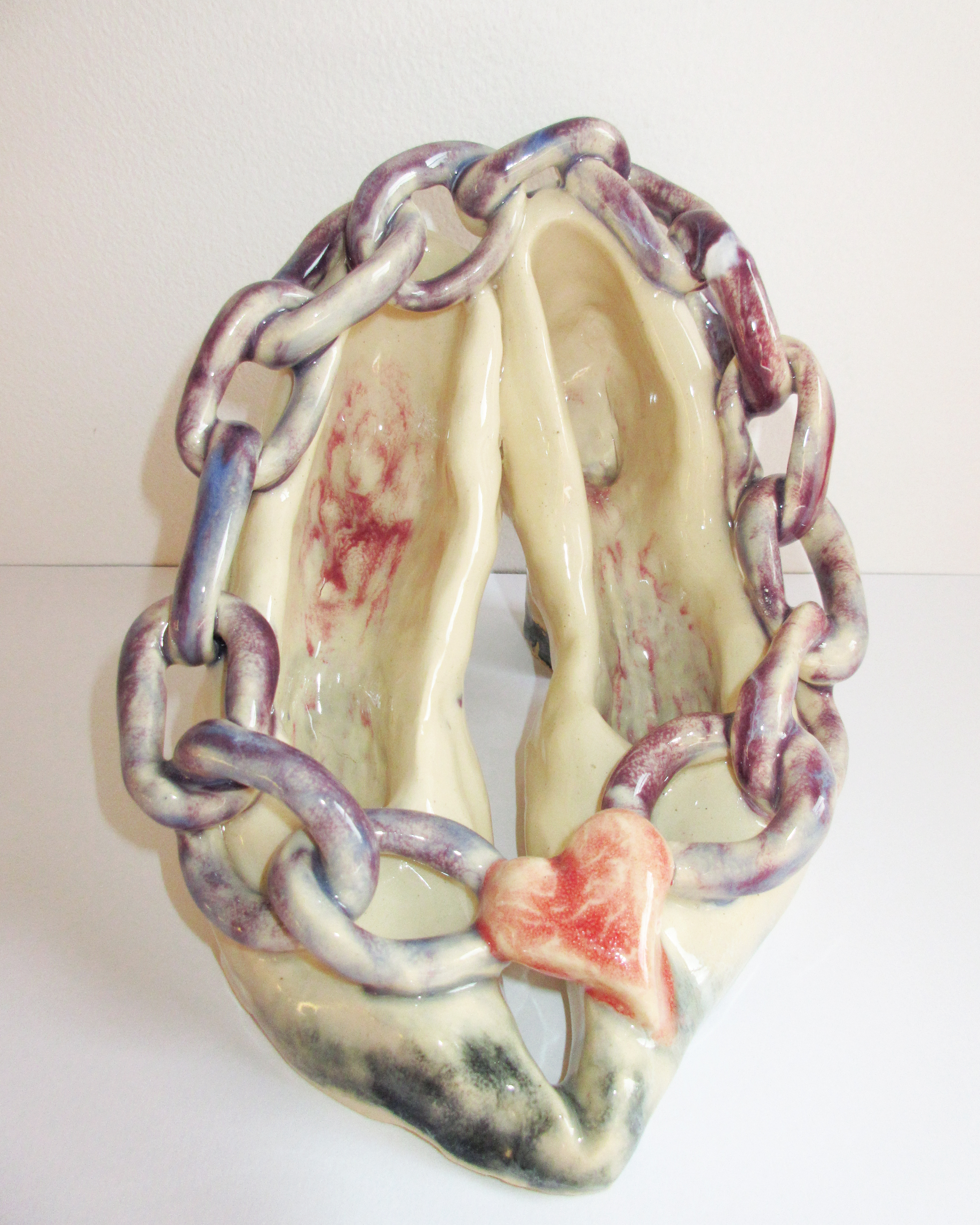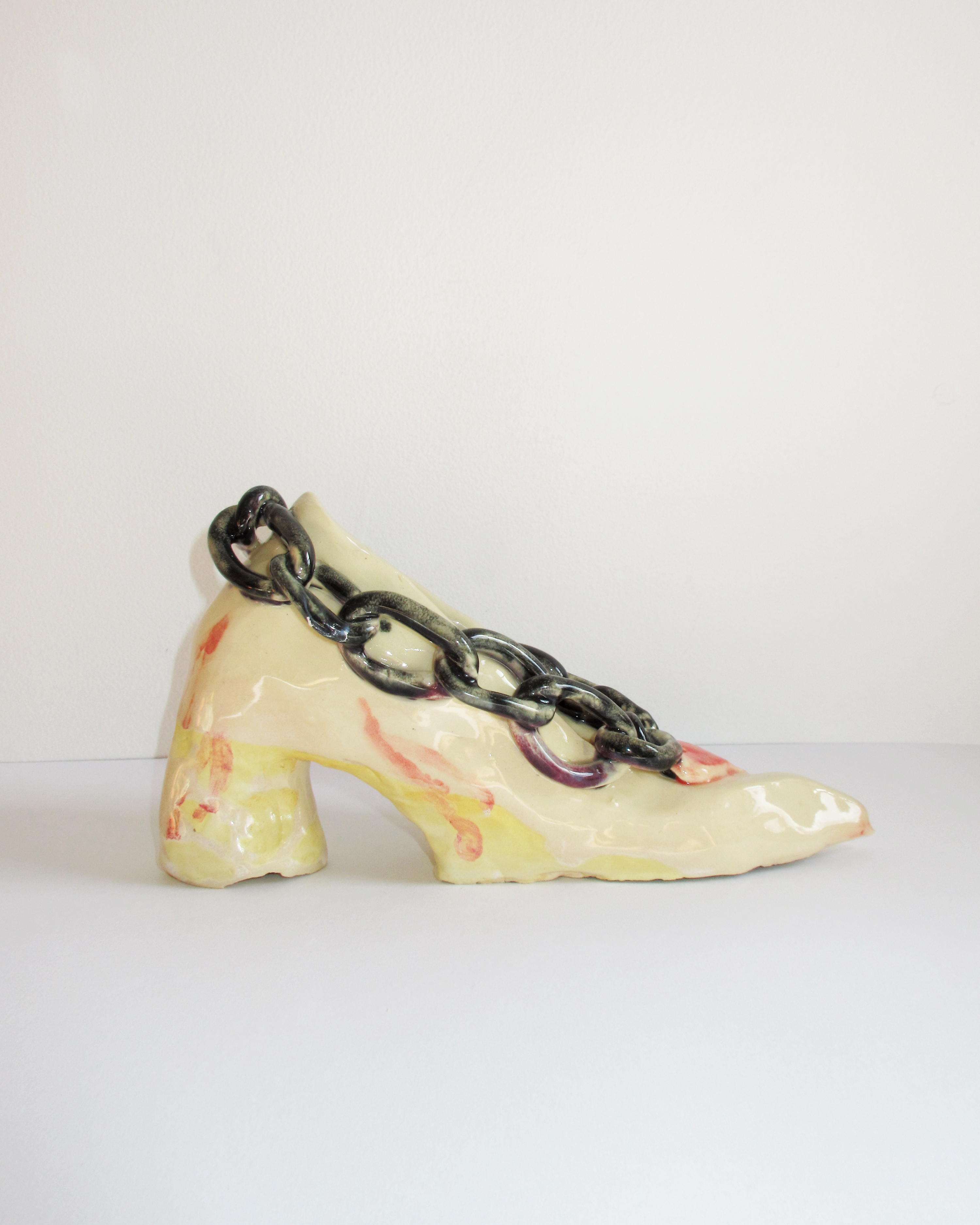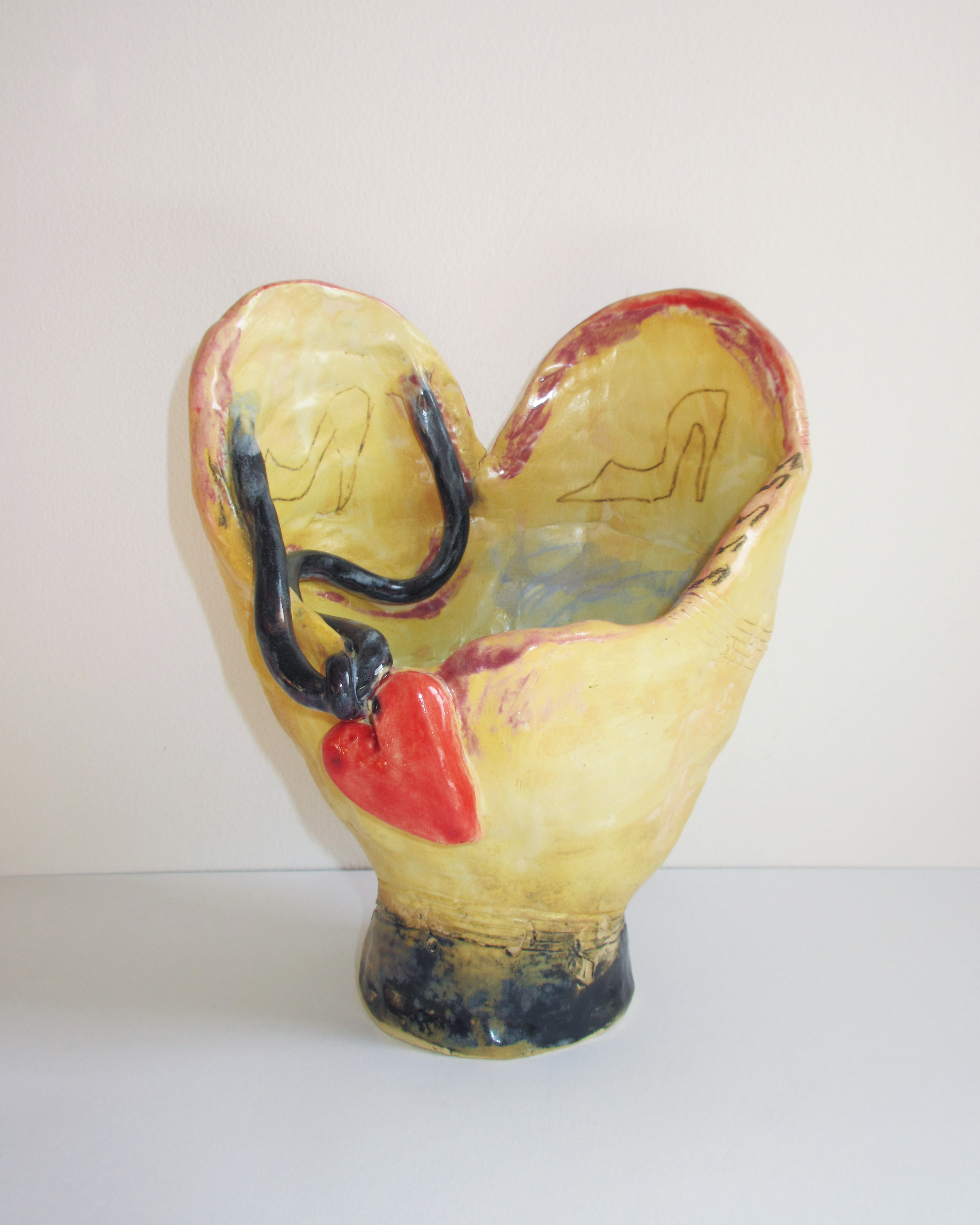Rachel Kahn is a New York City-based multimedia artist best known for her ceramic sculptures, design, and paintings. A graduate of The New School, Rachel is currently exploring emotional complexity and language in her work. Curator Daphne Moses sat down with Rachel in Park Slope to discuss what motivates her style as well as the physical process of working with clay.
Daphne: How would you describe your background as an artist? Do you attribute your artistic process to formal training?
Rachel: I’ve been creating since I was a kid so you could classify some of the work I was doing then as formal, or at least formative. I spent a year in the fine arts program at Parsons but it was very experimental; I didn’t find my truest form of creating in that space. It only came after I quit my previous job and gave myself time to create. Time was really the formality.
Daphne: As an artist of many mediums, what drew you to ceramics? Professionally, you have a background in graphic design and digital art. How does working with your hands affect your style?
Rachel: It began as a rebellion against working on screens which felt very unnatural for me. I craved something I could do that was more of an old-world, craftsman creation. I’ve always loved working with my hands because it gives you the truest connection to the medium you’re working with. Working with clay or ceramics feels like an extension of yourself. There’s no tool or brush in between you and that object – there is direct contact. Working with my hands feels god-intended, not in a religious sense, but in a pure, uninhibited sense.
[As for what drew me to ceramics], there is nothing you can augment or change at a certain point. You cannot always control it. You’re forced to let go of a preconceived notion or expectations of a piece – when you take it out of the kiln in the last stage of glazing, you don’t even know how it came to be that way. It serves as a mirror of your process.

Daphne: Aesthetically, your work is very organic. Many ceramics are made to look seamless and perfect. Your work has such a strong human quality.
Rachel: One of the keystones of my work is that none of my pieces are functional. Even the vessels are made with holes at the bottom. You cannot fill them with water or place flowers in them. They’re more artistic sculptures than ceramics as I believe there is a difference between the two. The so-called imperfections were really hard for me at first. The first iterations of shoes I made in 2020 in comparison to where I've been led are way more rigid even though they are still hand built. There was something scary and necessary and exciting for me to let go of my own rigidity to tap into my 9-year old self. I had to let go of the topsoil layer of my subconscious.
Daphne: Let’s talk about the shoes. In your piece, “Big Shoes”, you explore height and performance. How do you utilize the motif of the high heel in the performance of height?
Rachel: The element of “performance” is in relation to everyday life in terms of the recital of life and how you move through the world. It’s not just a literal stage but a fictional stage in which you move through the outside world. The shoe is symbolic of repetition and pattern. You do the dance of life, pain, and experience but these old relics (shoes) represent time passing through the performance of life.

Daphne: The high heel also holds many feminine implications. Additionally, a lot of your work depicts the female form. How do you explore gender in your work?
Rachel: Femininity has been displayed in my work since I was a child. There has always been an exploration of what femininity is and how it can be expressed via interior/exterior paths. I think heels are beautiful and have so much admiration for that form and silhouette but the most feminine thing about me is probably my artwork. I don’t usually wear heels, as I’ve found the truest depiction of my soul is through my work. The performance doesn’t have to be on my body – it can be in my work. All of my work faces inward. The subject of femininity is a reflection of my own experiences. It’s not political as much as its emotional.
Daphne: That’s why it connects on a deeper level. Your work is deeply raw and emotionally charged.
Rachel: It’s a necessity to release the rawness from my emotions into the piece. It's cyclical to expel that. I really want to convey that emotion. The viewers don’t have to know what compelled the piece but rather that it’s alive with something.
Daphne: We’ve discussed the emotional threshold that structures your work. Is there a moment or theme you can pinpoint that stuck out as a figure of inspiration?
Rachel: I'm most inspired and moved by children’s art and outsider art. What is undeniable about them is the pure connection with the soul. There is no barrier or humility in expectations. As a child, you feel the rawest, purest parts of imagination. Growing up, I was more of a perfectionist. Recently, I've been trying to channel my inner child as a way to let go of those inhibitions.
Daphne: That’s an important observation. When you’re a child, you want to imitate adulthood by striving for perfection. But as an adult, you want to recapture the childish rawness you don't have access to so easily.
Rachel: I’ve been looking back on work I made as a child and I’m almost jealous that I don't have the ability to create like that now. I’m envious of that level of unhinged creativity. It’s truly unhinged.
Daphne: So much of children’s art is terrifying
Rachel: But brilliant.

Daphne: Something that drew me to your work was a kind of playfulness that clearly draws from humor, and rebellion. I can see the ways you implement that train of thought in your practice in your use of shapes and primary colors.
Rachel: The product that’s being made is almost primary but the emotion that I’m immortalizing in the piece is the complex element of my work. I’m whittling down these emotions to these elementary forms and motifs by employing aesthetic limitations.
Daphne: Speaking of utilizing a restricted language, the way children react to things is so unbridled because they don’t have the appropriate language yet. The way you tap into that creatively is really impactful.
Rachel: It’s like infant hieroglyphics!
This interview has been edited for clarity.
Images courtesy of the artist.
